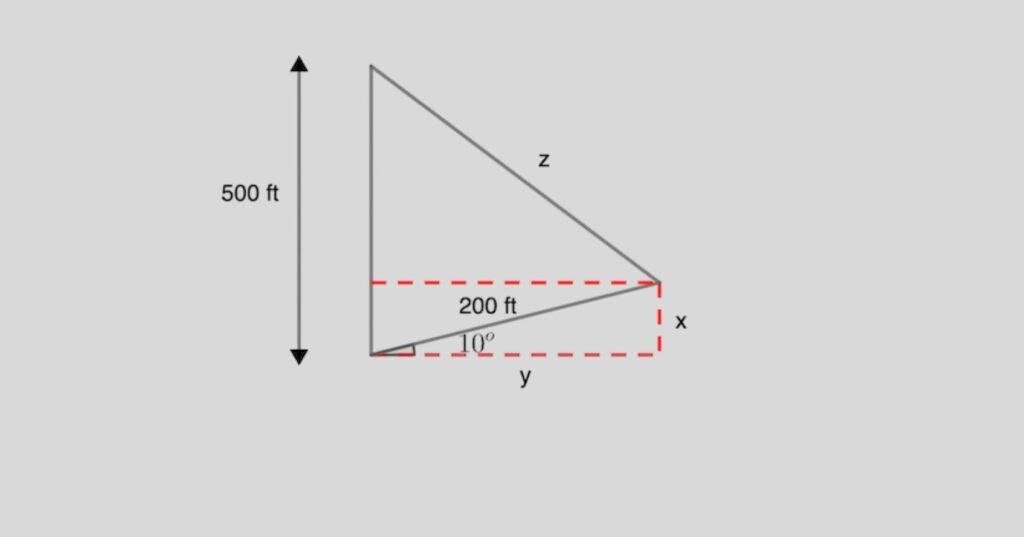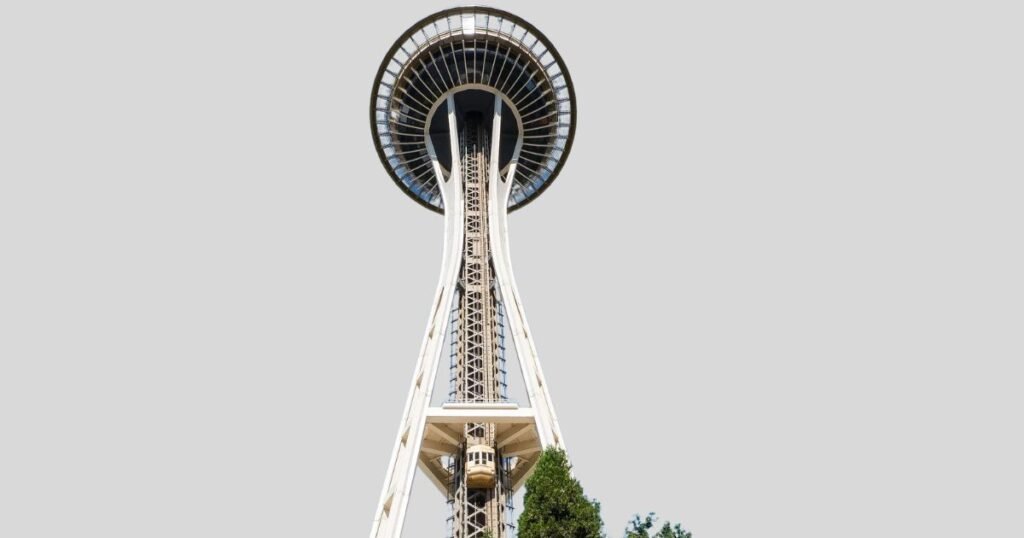How Long Is 500 Feet? 10 Most Common Things That Are 500 Feet Long
500 feet sounds like a simple measurement but it plays a crucial role in everyday lives, from urban planning to personal navigation. This distance is vital for pilots as they navigate their approach to landing. Understanding this distance also helps us visualize spaces better in daily life and enhances our knowledge of air travel. It is about the height of a 50-story building.
How Big Is 500 Feet?
Five hundred feet is a striking measurement that can be hard to visualize. To visualize this length consider the average blue whale about 100 feet. This means five blue whales are equal to this length. 500 ft is also roughly the height of a typical 50-story skyscraper. A football field, including the end zones, measures 360 feet long. Therefore, 500 ft is almost one and a half football fields laid end to end.

How Long Is 500 Feet?
| Measurement Type | Equivalent of 500 Feet Distance |
| Inches | 6,000 inches |
| Yards | 166.67 yards (500 ÷ 3) |
| Meters (m) | 152.4 meters |
| Kilometers (km) | 0.1524 km |
| Miles | 0.0947 miles |
| Centimeters (cm) | 15,240 cm |
| Millimeters (mm) | 152,400 mm |
| Time to Walk | ~2 minutes (average walking speed ≈ 3 mph or 4.4 ft/sec) |

What Does 500 Feet Look Like?
Five hundred feet is an interesting distance to visualize. It’s roughly the length of five football fields placed end to end. If you stood at the top of a 50-story building, this height is about 500 ft. This height is significant in urban landscapes, where towering skyscrapers often dominate the skyline. It is the height of a tall tree or the depth of a canyon. The edge of a cliff also drops 500 ft into a valley below.
Things That Are 500 Feet Long
Five hundred feet is a long and simple measurement that can be visualized if you know about things that measure this length. So here are some practical examples of this length:
Seattle’s Space Needle
The Seattle Space Needle stands at an impressive height of 605 feet, slightly larger than 500 ft. It is one of the tallest structures in the Pacific Northwest. It was completed in 1962 for the World’s Fair and has become a symbol of innovation and progress. Visitors can take an elevator to the observation deck, which offers stunning panoramic views of the city, Puget Sound, and the surrounding mountains.

1.5 Football Fields
A standard American football field, including the end zones, measures 360 feet in length and 160 feet in width. This playing area is a versatile space for various sports and community activities. The end zones, each 10 yards deep, add 20 yards to the field’s overall length and are ideal for scoring plays and strategic maneuvers.
5 Blue Whales lined Up
A blue whale is approximately 100 feet long so 500 ft will be the length of 5 blue whales. These gentle giants are the largest animals on Earth, with some individuals weighing as much as 200 tons. Their size plays a crucial role in their survival. These bodies allow them to dive deep into the ocean for food and consume tiny shrimp-like creatures called krill.
2.5 Ferris Wheels
Ferris wheels offer a unique blend of excitement and awe. They typically stand at 200 feet; this means five hundred feet is equal to 2.5 Ferris wheels. These towering structures provide stunning views of their surroundings. These are popular attractions at fairs, amusement parks, and festivals. The height allows riders to experience a sense of adventure while enjoying panoramic landscapes that are often breathtaking.
Large Cruise Ships
Large cruise ships are floating cities designed to provide a unique travel experience. They often exceed 1,000 feet in length which means five hundred feet is approximately half of this length. They have the capacity to carry thousands of passengers and crew. These vessels offer a wide range of amenities. They have multiple dining options and entertainment venues, swimming pools and spas. Their size allows for diverse activities onboard and ensures there’s never a dull moment.
Oil Tankers
Oil tankers are large vessels designed to transport crude oil and refined petroleum products across oceans. They come in various sizes, typically ranging from 500 feet for smaller ships to over 1,200 feet for the largest supertankers. The capacity of these giants can exceed 500,000 deadweight tons and allow them to carry millions of barrels of oil in a single voyage.
Large Docks
Large docks serve as vital hubs for maritime activities. Commercial shipping docks typically range from 500 to 1,000 feet in length. These expansive platforms accommodate vessels, including cargo ships, yachts, and ferries. Their size allows for efficient loading and unloading of goods, which is crucial for trade and commerce. They often feature multiple berths and reduce wait times for ships.
Seagoing Barge
Seagoing Barges are large, flat-bottomed vessels typically measuring between 300 to 500 ft in length. They are designed primarily for transporting bulk goods such as coal, grain, and aggregates along rivers and canals. The shallow draft of a barge allows it to navigate shallow waters where larger ships cannot. A single barge can carry dozens of truckloads and reduce transportation costs and fuel consumption.
Piers
Piers that extend 500 ft into the water serve as vital structures for various purposes. Primarily, they provide access for boats and fishing enthusiasts to reach deeper waters. This length allows for safe docking and loading and makes it easier for larger vessels to moor without hindrance from shallow areas. A 500-foot pier can accommodate numerous activities, from strolls to commercial operations.
Runway Sections
Some runway sections measure 500 feet which is crucial in aviation and serve as segments of larger runways. These sections often facilitate takeoffs and landings in various weather conditions. A 500-foot segment allows for shorter aircraft operations and is ideal for smaller airports or emergency landings. This size strikes a balance between accommodating light aircraft and maintaining operational efficiency.
Conclusion
Understanding 500 feet length helps to visualize distances in everyday lives, such as aviation, construction, and safety regulations. For instance, it is about the length of five school buses lined up end to end. This measurement can determine how high a plane should fly or how far a building should be from a property line. Knowing this distance also helps to ensure safety and compliance with rules and aids in planning and decision-making for professionals and the public.
FAQs
How Many Miles is 500 Feet?
There are 5,280 feet in one mile. So, to find out how many miles 500 ft is, divide 500 by 5,280 which is approximately 0.095 miles. This means that 500 ft is a little less than one-tenth of a mile.
How Far is 500 Feet?
500 feet is a manageable distance that can be easily visualized in everyday terms. It is about one and a half times the length of a football field. In many cities, a typical city block is about 1,000 feet long. This means that 500 ft is roughly half a block.
How Far is 500 Feet Visually?
Five hundred feet is a bit longer than the length of a football field about 300 feet long. A typical five-story building is also around 50 feet high. This means that 500 ft is the height of ten such buildings stacked on each other.
How Far is 500 Feet to Walk?
Walking 500 ft is equivalent to about 0.1 miles. At a normal pace, it usually takes around 5 to 7 minutes to cover this distance. It’s about five city blocks in an urban area. Walking this distance is easy and can be done without much effort.

